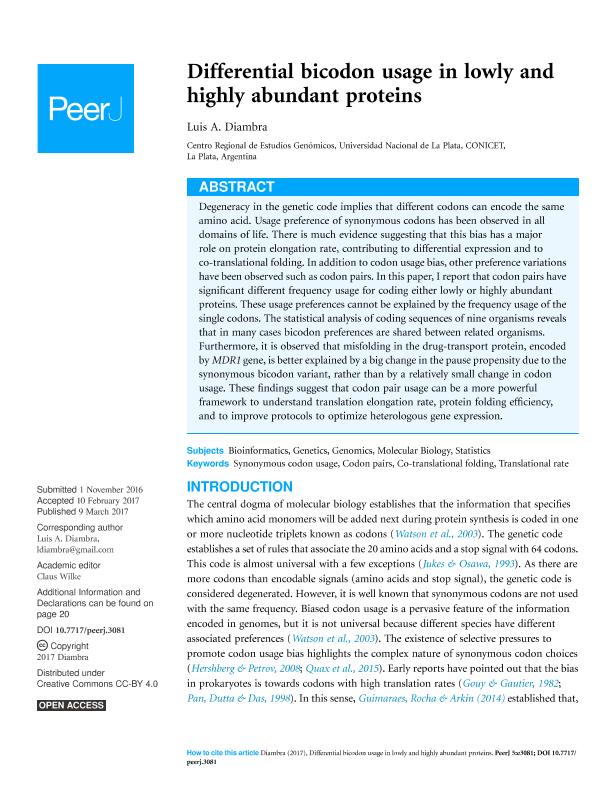Artículo
Differential bicodon usage in lowly and highly abundant proteins
Fecha de publicación:
03/2017
Editorial:
PeerJ
Revista:
PeerJ
ISSN:
2167-8359
Idioma:
Inglés
Tipo de recurso:
Artículo publicado
Clasificación temática:
Resumen
Degeneracy in the genetic code implies that different codons can encode the same amino acid. Usage preference of synonymous codons has been observed in all domains of life. There is much evidence suggesting that this bias has a major role on protein elongation rate, contributing to differential expression and to co-translational folding. In addition to codon usage bias, other preference variations have been observed such as codon pairs. In this paper, I report that codon pairs have significant different frequency usage for coding either lowly or highly abundant proteins. These usage preferences cannot be explained by the frequency usage of the single codons. The statistical analysis of coding sequences of nine organisms reveals that in many cases bicodon preferences are shared between related organisms. Furthermore, it is observed that misfolding in the drug-transport protein, encoded by MDR1 gene, is better explained by a big change in the pause propensity due to the synonymous bicodon variant, rather than by a relatively small change in codon usage. These findings suggest that codon pair usage can be a more powerful framework to understand translation elongation rate, protein folding efficiency, and to improve protocols to optimize heterologous gene expression.
Archivos asociados
Licencia
Identificadores
Colecciones
Articulos(CCT - LA PLATA)
Articulos de CTRO.CIENTIFICO TECNOL.CONICET - LA PLATA
Articulos de CTRO.CIENTIFICO TECNOL.CONICET - LA PLATA
Citación
Diambra, Luis Anibal; Differential bicodon usage in lowly and highly abundant proteins; PeerJ; PeerJ; 2017; 3; 3-2017; 1-24
Compartir
Altmétricas




